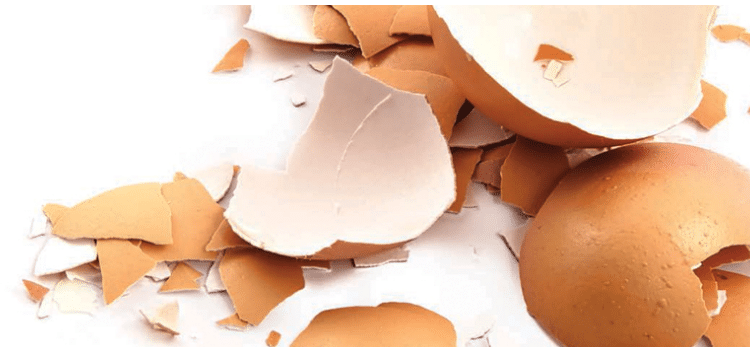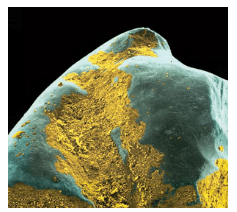
Implementing a Minimally Invasive Approach
Employing remineralization strategies instead of providing restorative care may be the most prudent approach to saving tooth structure.
A radiolucency in tooth enamel or dentin no longer automatically indicates that a dental restoration is needed. Rather than potentially compromising a tooth’s structural integrity (or pulpal health) by preparing a site for a conventional dental restoration, tactics aimed at remineralizing sites with shallow caries often make better sense.1 This approach can be less expensive and may reduce the discomfort associated with preparing and placing a conventional restoration.
The World Health Organization (WHO) notes that 60% to 90% of children and nearly 100% of adults have a history of dental caries.2 The caries process begins with the action of organic acids, which are produced by bacteria found in organized dental plaque via the anaerobic metabolism of dietary sugars.3 When this dental plaque goes undisturbed by effective self-care, these organic acids may initiate the early stages of demineralization.4 Demineralization gradually weakens the tooth structure, making it more susceptible to plaque formation and demineralization.
Remineralization is the process by which the damage to these surfaces is repaired by replacing surface minerals. For this to occur, calcium phosphate ions must be present. Calcium phosphate is always present in saliva; however, the digestion of sugars and carbohydrates causes the pH of saliva to drop. This acidic pH prevents the calcium-phosphate-saturated saliva from remineralizing the affected tooth.4 In such circumstances, limiting dietary sucrose and removing the plaque from the site will facilitate natural remineralization, but numerous exogenous substances can also facilitate remineralization.
Remineralization helps maintain the structural integrity of a tooth, which is especially important in teeth that have previously been restored. Fracture and dental caries are major concerns for restored teeth.5 Intact teeth, under normal function, are less likely to fracture.4 Restorations often change the coronal stress distribution, which can lead to an increased risk of tooth fracture.4 The recent placement of restorations (within the past 3 years) also increases patients’ risk of recurrent caries.6 A study conducted on 803 restorations found that 56% had recurrent caries.6 This percentage increased by 28% when bitewing radiographs were captured and evaluated. Thus, employing remineralization strategies may not only help decrease caries risk but also maintain optimal tooth structure and function, decreasing the chance of fracture.4–7
REMINERALIZATION STRATEGIES
A variety of strategies is available to help oral health professionals remineralize tooth surfaces. A common approach is the use of sodium fluoride (NaF). Oliveira et al8 found in an in vitro experiment that the use of 1.1% NaF (5,000 ppm) dentifrice for 10 days remineralized white spot lesions. Another systematic review concluded that the use of NaF mouthrinse increased the probability of remineralization by 50% to 148%, and the use of 5% NaF varnish helped increase the probability of remineralization by 63%.9
Stannous fluoride (SnF2) provides the same benefits as NaF but also offers antimicrobial action. A study that compared amine, NaF, and SnF2 revealed SnF2 to be the most effective at inhibiting the demineralization process in a mildly acidic solution designed to replicate that which is seen in the mouth.10 Another in vivo study showed that SnF2 was more effective at protecting enamel from acid erosion compared with NaF alone.11 The use of SnF2 may cause staining, but this risk has been reduced with a new generation of toothpastes and mouthrinses in which the formulation is more stable.10

DR TONY BRAIN / SCIENCE PHOTO LIBRARY
Acidulated phosphate fluoride (APF) is another fluoride compound used in a 1.23% gel or foam solution that is typically only applied in office. Ivanoff et al12 showed that a combination APF gel (12,300 ppm fluoride) and dielectrophoresis yielded a microhardness recovery of 88.17%. APF may cause erosion on various types of restorative material, so its use is contraindicated in the presence of specific types of restorative materials.13
The use of calcium phosphate technologies may support the remineralization process, although more research is needed to prove their efficacy. Amorphous calcium phosphate (ACP) is helpful in caries prevention.14 The compound dissipates rapidly and offers quick apatite reprecipitation for demineralized surfaces. Because ACP is unstable, the calcium and phosphate ions are delivered individually, which allows the precipitation of ACP on the demineralized surface. This creates a reservoir of calcium ions and phosphate ions on the tooth surface.15
Casein phosphopeptide (CPP)-ACP, or Recaldent, is a protein derived from milk that offers remineralization benefits. One study showed that CPP-ACP caused a significant reduction in the depth of erosion in a caries lesion, as well as reduced surface roughness.15,16
A bioactive glass originally created to regenerate bone, calcium sodium phosphosilicate, or Novamin, disseminates calcium ions, phosphate ions, and sodium ions when in contact with saliva. The calcium and phosphate ions encourage remineralization.15,17
Tri-calcium phosphate is the latest addition to the calcium phosphate family of materials. It is designed to prohibit the exposure of calcium to fluoride ions until saliva is present. At this point, the calcium ions, phosphate ions, and fluoride ions are released to provide remineralizing properties to the tooth surface.15,18
An evidence-based approach must be taken when evaluating the potential of these products, which includes reviewing available research, considering patient needs, and incorporating clinician expertise. There are varying levels of research available that investigate the efficacy of these remineralization strategies, including direct comparison studies.7–19
THE FUTURE OF REMINERALIZATION
Eggshells are currently being investigated for their remineralization capabilities. Mony et al20 used X-ray fluorescence spectroscopy to determine that chicken eggshell powder (CESP) contains 98% calcium and a high concentration of ingredients that are integral to the remineralization process. CESP also has a pH of 11.7.20 This combination of calcium and phosphate, in a basic pH, may potentially provide strong buffering action that can increase the pH of an acidic environment where demineralization is likely to occur and offer a high bioavailability of calcium. In time, it may be possible to create a commercially available agent using CESP.
Some studies involving the application of CO2 laser irradiation in conjunction with fluoride application have found increases in the microhardness of a tooth. A study that used acidulated phosphate fluoride gel found that the microhardness of the samples that were irradiated before fluoride was applied were significantly higher than the group that received fluoride treatment only and a control group.21 Currently, in vitro studies demonstrate the effectiveness of the CO2 laser in the remineralization process, especially when used in conjunction with a fluoride application. More research (especially in vivo studies) is needed, however, to prove its efficacy.
An electrically accelerated and enhanced remineralization (EAER) system is currently being researched as a remineralization strategy in the United Kingdom. It is based on the use of a small electrical current to increase the flow of calcium and other minerals into the demineralized site.22 With continued research, the EAER system may offer a viable remineralization strategy.
CONCLUSION
No patient enjoys having a caries lesion restored and the adoption of remineralization strategies as a first line of treatment for demineralized areas may prevent the need for extensive restorative therapy. Trying remineralization first can be beneficial to the patient-provider relationship, as well as the tooth structure itself. There are numerous active ingredients currently available that have been proven to help remineralize a tooth, and research is continuously being conducted on other noninvasive methods to further support the remineralization process.
References
-
- Sharma G, Puranik MS, Sowmya KR. Approaches to arresting dental caries: an update. J Clin Diagn Res. 2015;9:8–11.
- World Health Organization. Oral Health: Fact Sheet. Available at: who.int/mediacentre/factsheets/fs318/en. Accessed February 9, 2016.
- Moynihan PJ. The role of diet and nutrition in the etiology and prevention of oral diseases. Bull World Health Organ. 2005;83:694–699.
- Chow L, Wefel JM. The dynamics of de- and remineralization. Dimensions of Dental Hygiene. 2009;7(2):42–46.
- Versluis A, Versluis-Tantbirojn D. Filling cavities or restoring teeth? J Ten Dent Assoc. 2011;92:36–42.
- Sonbul H, Birkhed D. Risk profile and quality of dental restorations: A cross-sectional study. Acta Odontol Scand. 2010;68:122–128.
- Doméjean S, Léger S, Rechmann P, White JM, Featherstone JDB. How do dental students determine patients’ caries risk level using the caries management by risk assessment (CAMBRA) system? J Dent Educ. 2014; 79:278–285.
- Oliveira GMS, Ritter AV, Heymann, HO, et al. Remineralization effect of CPP-ACP and fluoride for white spot lesions in vitro. J Dent. 2014;42:1592–1602.
- Gibson G, Jurasic MM, Wehler CJ, Jones JA. Supplemental fluoride use for moderate and high caries risk adults: A systematic review. J Public Health Dent. 2011; 71:171–184.
- Ganss C, Schlueter N, Hardt M, Schattenberg P, Klimek J. Effect of fluoride compounds on enamel erosion in vitro: A comparison of amine, sodium and stannous fluoride. Caries Res. 2008;42:2–7.
- Bellamy PG, Harris R, Date RF, et al. In situ clinical evaluation of a stabilized stannous fluoride dentifrice. Int Dent J. 2014;64:43–50.
- Ivanoff CS, Hottel TL, Garcia-Godoy F. Microhardness recovery of demineralized enamel after treatment with fluoride gel or CPP-ACP paste applied topically or with dielectrophoresis. Am J Dent. 2012;25:109–113.
- Ccahuana VZ, Ozcan M, Mesquita AM, Nishioka RS, Kimpara ET, Bottino MA. Surface degradation of glass ceramics after exposure to acidulated phosphate fluoride. J Appl Oral Sci. 2010;18:155–165.
- Dorozhkin SV. Amorphous calcium (ortho) phosphates. Acta Biomater. 2010;6:4457–4475.
- Shah MA. Remineralize with calcium-based therapies. Dimensions of Dental Hygiene. 2013;11:30–35.
- Agrawal N, Shashikiran N, Singla S, Ravi K, Kulkarni V. Atomic force microscopic comparison of remineralization with casein-phosphopeptide amorphous calcium phosphate paste, acidulated phosphate fluoride gel and iron supplement in primary and permanent teeth: An in-vitro study. Contemp Clin Dent. 2014;5:75–80.
- Mony S, Rao A, Shenoy R, Suprabha BS. Comparative evaluation of the remineralizing efficacy of calcium sodium phosphosilicate agent and fluoride based on quantitative and qualitative analysis. J Indian Soc Pedod Prev Dent. 2015;33:291–295.
- Vanichvatana S, Auychai P. Efficacy of two calcium phosphate pastes on the remineralization of artificial caries: a randomized controlled double-blind in situ study. Int J Oral Sci. 2013;5:224–228.
- Conforti N, Mankodi S, Zhang YP, et al. Clinical study to compare extrinsic stain formation in subjects using three dentifrice formulations. Compend Contin Educ Dent Suppl. 2000;27:23–27.
- Mony B, Ebenezar AVR, Ghani MF, Narayanan A, Anand S, Mohan AG. Effect of chicken egg shell powder solution on early enamel carious lesions: An in vitro preliminary study. J Clin Diagn Res. 2015;9:30–32.
- Poosti M, Ahrari F, Moosavi H, Najjaran H. The effect of fractional CO2 laser irradiation on remineralization of enamel white spot lesions. Lasers in Med Sci. 2013;9:1349–1355.
- Losh J. E-filling may end drilling at dentist’s. The Sun. June 16, 2014.
From Dimensions of Dental Hygiene. March 2016;14(03):32,34,37.

